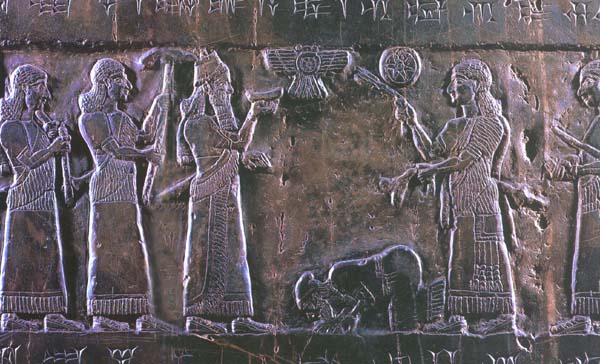Image Details

Erich Lessing
“Tribute of Jehu, Son of Omri,” reads the cuneiform caption over the panel, the second register from the top of the Black Obelisk. The panel depicts the Israelite king Jehu (ruled 841–814 B.C.E.) or one of his emissaries prostrating himself before the Assyrian king Shalmaneser III, who ruled from 858 to 824 B.C.E. Symbols of the gods Assur (the winged disk) and Ishtar (the star) hover above the obeisant figure. Three other panels, one on each side of the stela, show Israelites offering tribute that includes tin, gold and silver objects, and javelins. Although the Bible never mentions Shalmaneser, it tells us that Jehu was a usurper who killed Omri’s descendants (2 Kings 9:14; 10:4).
According to the traditional interpretation, the identification of Jehu on the Black Obelisk as “son of Omri” means “son of the house of Omri,” a conventional designation for any Israelite. Author Tammi Schneider argues, however, that the Assyrians got their facts right, and that Jehu was indeed a descendant of the Israelite king Omri, King Ahab’s father. It is significant, she suggests, that in the Bible Jehu destroys the “House of Ahab” and not the House of Omri, of which Jehu himself was a member.
